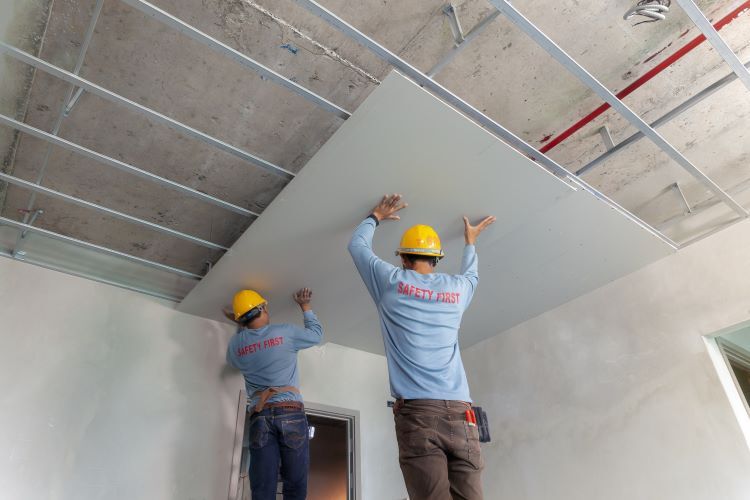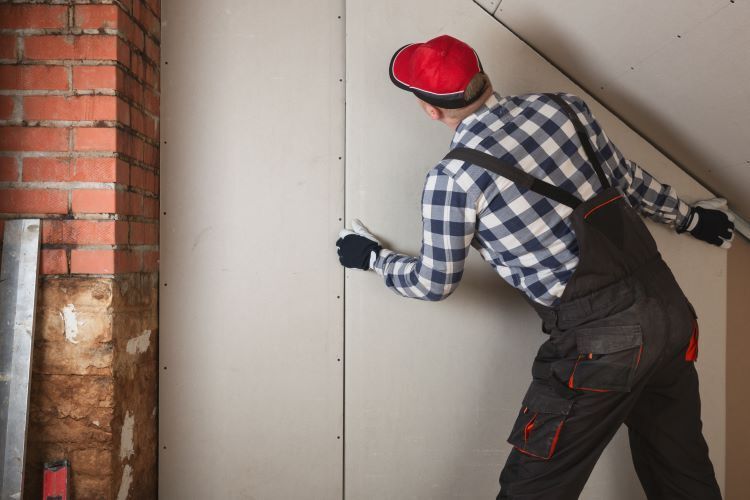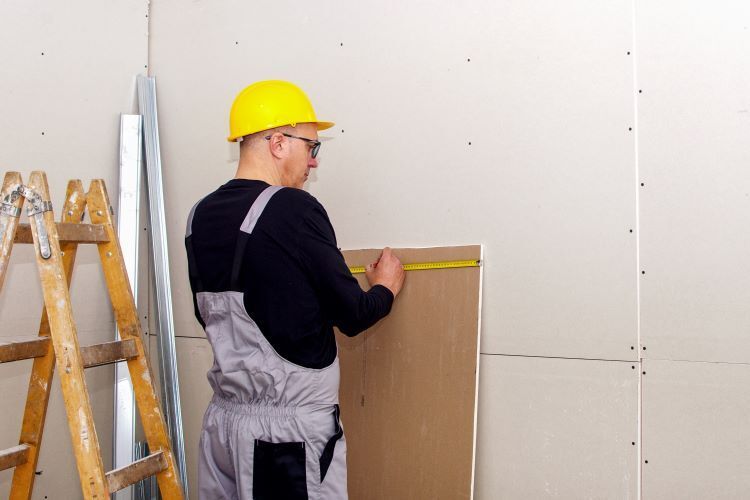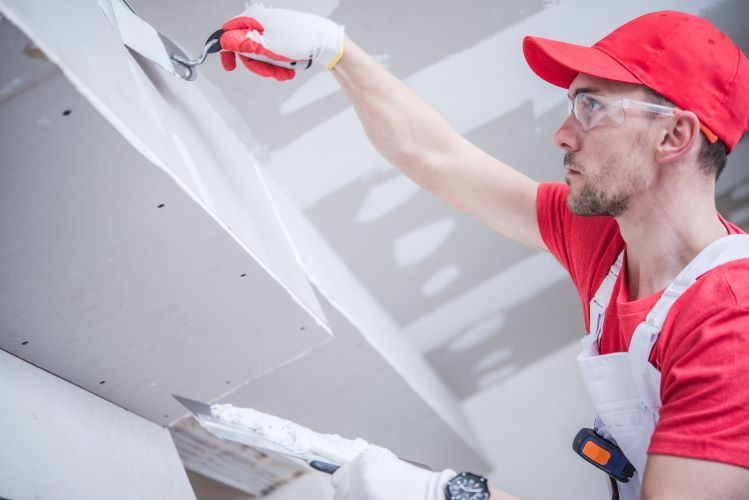How to Drywall a Ceiling

Drywalling a ceiling can be a challenging task, but with the right tools and techniques, it can be done efficiently and effectively. Whether you're renovating your home or fixing up a room, a properly installed drywall ceiling can enhance the overall look and feel of your space. In this guide, we'll walk you through the process of drywalling a ceiling, ensuring you achieve a professional finish.
Tools and Materials You'll Need
- Drywall sheets (1/2 inch thick for most ceilings)
- Drywall screws
- Drywall lift or a helper
- Screw gun or drill
- Utility knife
- T-square
- Measuring tape
- Drywall saw
- Joint tape
- Joint compound
- Putty knife
- Sanding block or sandpaper
- Ladder or scaffolding
- Safety goggles and gloves
Step 1: Measure and Cut the Drywall
- Measure the Ceiling: Use a measuring tape to determine the dimensions of your ceiling. Measure the length and width of the ceiling to figure out how many drywall sheets you'll need.
- Cut the Drywall: Lay the drywall sheets on a flat surface and mark the measurements using a T-square. Use a utility knife to score the drywall along the marked lines, then snap the drywall along the scored line. Use a drywall saw for any necessary cutouts, such as for light fixtures or vents.
Step 2: Prepare the Ceiling
- Check for Level: Ensure that the ceiling joists are level. If they are not, you may need to shim the joists to create a level surface for attaching the drywall.
- Mark the Joists: Use a chalk line to mark the location of the ceiling joists. This will help you know where to place the screws when attaching the drywall sheets.
Step 3: Lift and Attach the Drywall
- Lift the Drywall: Using a drywall lift or with the help of a partner, lift the drywall sheet into place. Ensure that the edges of the sheet align with the ceiling joists.
- Attach with Screws: Starting at the center of the sheet, use a screw gun or drill to drive drywall screws into the joists every 12 inches. Be careful not to over-tighten the screws, as this can damage the drywall. Continue attaching screws along the edges of the sheet, ensuring it is securely fastened to the ceiling.
Step 4: Continue Installing Drywall Sheets
- Stagger the Seams: When installing additional sheets, stagger the seams to provide added strength and stability. Avoid having four corners meet at a single point.
- Fit the Sheets Together: Butt the sheets together tightly to minimize gaps. If necessary, trim the edges of the sheets to ensure a snug fit.
Step 5: Tape and Mud the Joints
- Apply Joint Tape: Once all the drywall sheets are in place, apply joint tape over the seams. Use a putty knife to press the tape firmly into the joint compound.
- Apply First Coat of Joint Compound: Using a wider putty knife, apply a thin layer of joint compound over the taped seams. Smooth out the compound, feathering the edges to blend with the drywall surface.
- Let It Dry: Allow the first coat of joint compound to dry completely, usually 24 hours.
- Apply Additional Coats: Apply a second and third coat of joint compound, each time feathering the edges further out. Sand between coats to ensure a smooth finish.
Step 6: Sand and Finish
- Sand the Joints: Once the final coat of joint compound is dry, sand the joints with a sanding block or sandpaper. Aim for a smooth, even surface.
- Prime and Paint: After sanding, wipe down the ceiling to remove any dust. Apply a primer to seal the drywall, then finish with paint to match your desired aesthetic.
Conclusion
Drywalling a ceiling is a manageable project with the right preparation and tools. By following these steps, you can achieve a professional-looking ceiling that enhances your space. However, if you find the task too challenging or want a flawless finish, consider reaching out to the experts at Barrie Drywallers.
Our professional team in Barrie, Ontario, has the experience and expertise to handle all your drywall needs, ensuring a perfect finish every time. Contact us today for a consultation and let us help you transform your home.
You Might Also Enjoy:



Contact Us!
